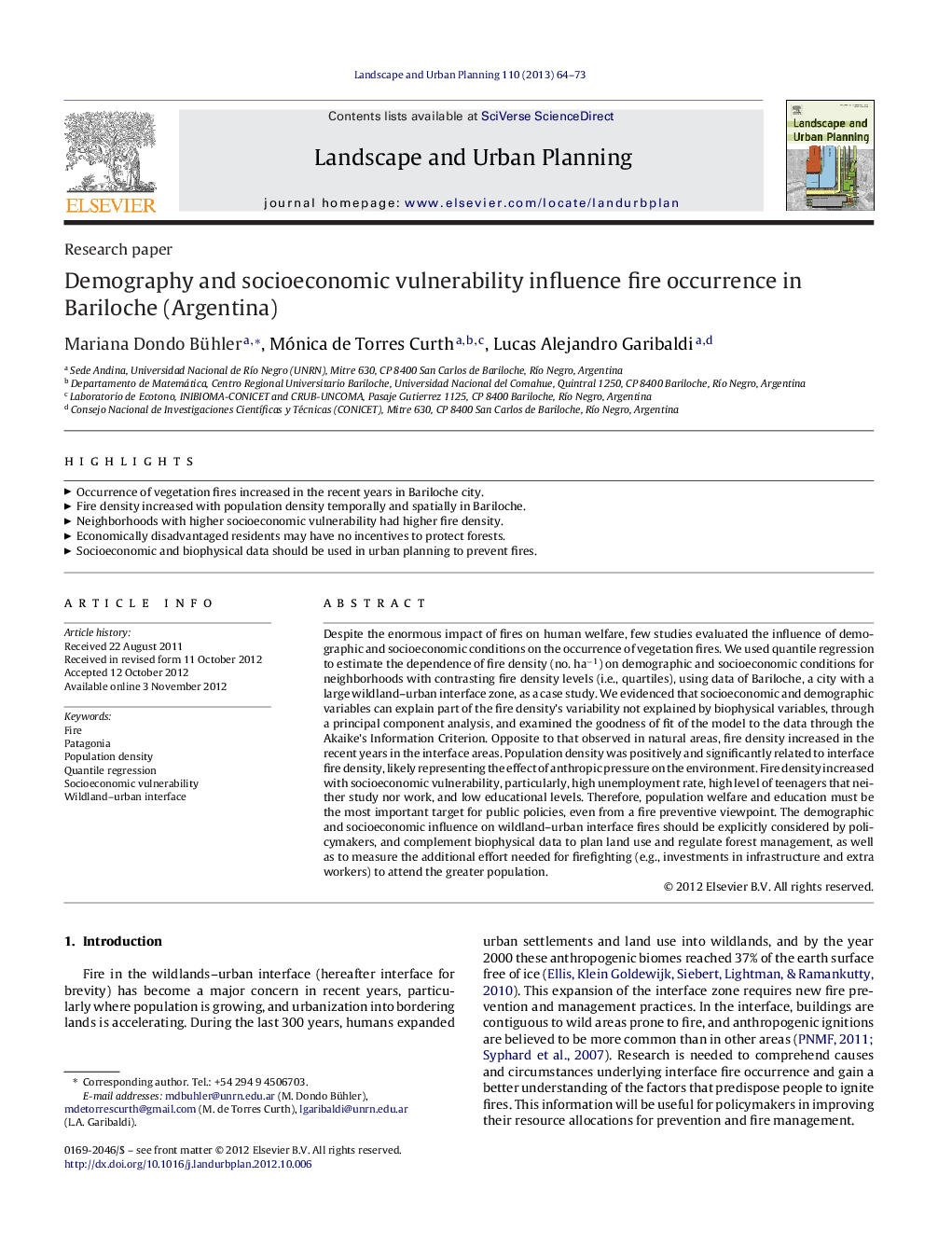| کد مقاله | کد نشریه | سال انتشار | مقاله انگلیسی | نسخه تمام متن |
|---|---|---|---|---|
| 1049264 | 1484648 | 2013 | 10 صفحه PDF | دانلود رایگان |

Despite the enormous impact of fires on human welfare, few studies evaluated the influence of demographic and socioeconomic conditions on the occurrence of vegetation fires. We used quantile regression to estimate the dependence of fire density (no. ha−1) on demographic and socioeconomic conditions for neighborhoods with contrasting fire density levels (i.e., quartiles), using data of Bariloche, a city with a large wildland–urban interface zone, as a case study. We evidenced that socioeconomic and demographic variables can explain part of the fire density's variability not explained by biophysical variables, through a principal component analysis, and examined the goodness of fit of the model to the data through the Akaike's Information Criterion. Opposite to that observed in natural areas, fire density increased in the recent years in the interface areas. Population density was positively and significantly related to interface fire density, likely representing the effect of anthropic pressure on the environment. Fire density increased with socioeconomic vulnerability, particularly, high unemployment rate, high level of teenagers that neither study nor work, and low educational levels. Therefore, population welfare and education must be the most important target for public policies, even from a fire preventive viewpoint. The demographic and socioeconomic influence on wildland–urban interface fires should be explicitly considered by policymakers, and complement biophysical data to plan land use and regulate forest management, as well as to measure the additional effort needed for firefighting (e.g., investments in infrastructure and extra workers) to attend the greater population.
► Occurrence of vegetation fires increased in the recent years in Bariloche city.
► Fire density increased with population density temporally and spatially in Bariloche.
► Neighborhoods with higher socioeconomic vulnerability had higher fire density.
► Economically disadvantaged residents may have no incentives to protect forests.
► Socioeconomic and biophysical data should be used in urban planning to prevent fires.
Journal: Landscape and Urban Planning - Volume 110, February 2013, Pages 64–73